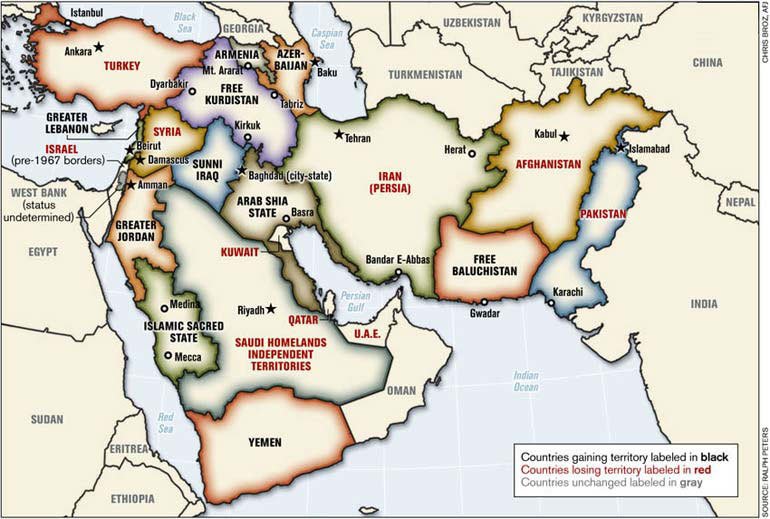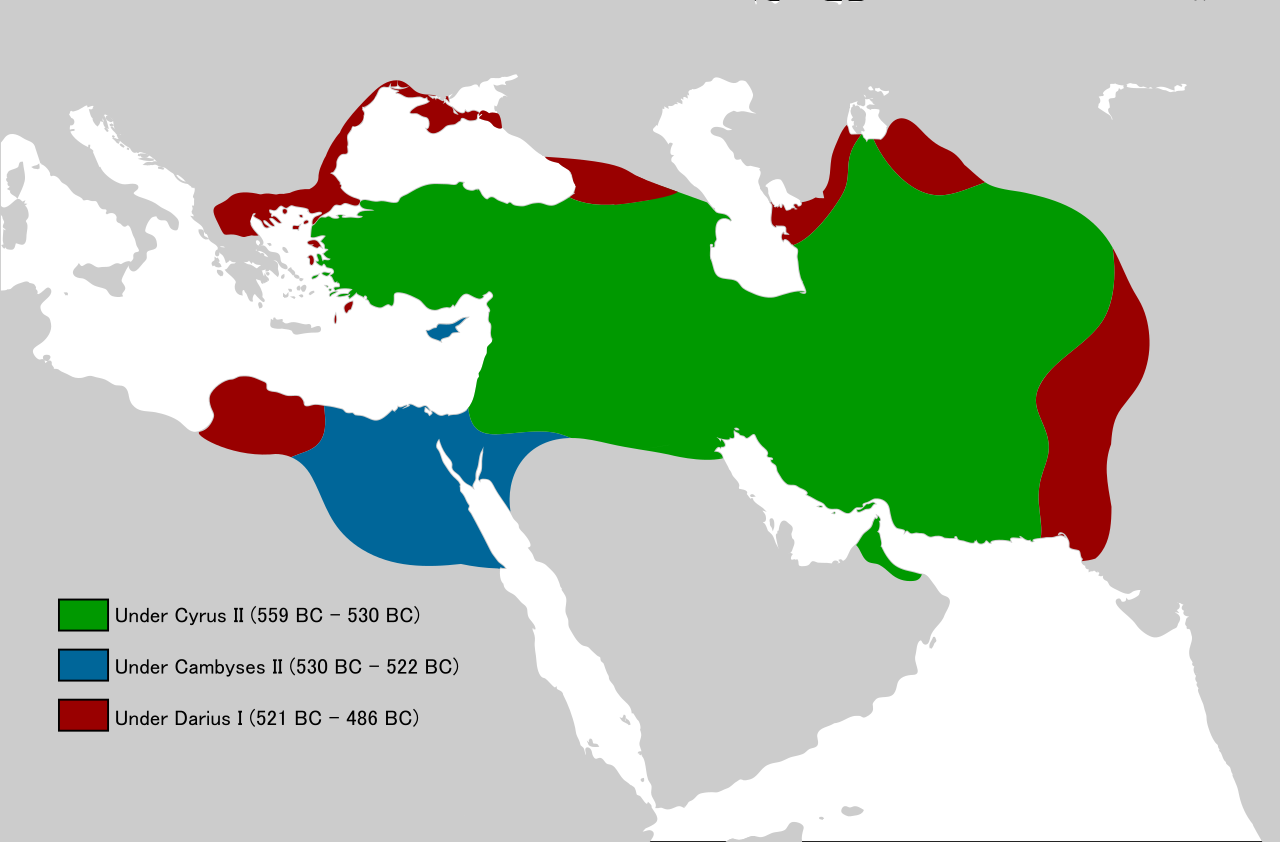
Views: 229
From the very historical perspective, the Middle East has been marked by diversity being a crossroads of civilizations. Nevertheless, at the time of Antique, the region was referred to as Mesopotamia (in Greek, the land between, i.e. between two rivers: Tigris and Euphrates), the Fertile Crescent (from Egypt via Palestine to Mesopotamia) where from originally both agriculture and rural/urban settlements started to be developed. At that time, what is today known as Libya, the land was rich in olives, wine, and livestock, and neighboring Egypt was a marshland with wildlife and cane forests. The farming and techniques of irrigation systems have been developed along the valley of the Nile River while the inhabitants of Mesopotamia (the valley of Tigris-Euphrates) within its alluvial plains developed the ancient Sumerian, Akkadian, Assyrian, and Babylonian civilizations in present-day Iraq. It is worth stressing that those Sumerians have been mainly Semites (like Arabs and Jews) who spoke a Semitic language which became a foundation of the major languages spoken by Middle Easterners like Aramaic, Syriac, Hebrew, and Arabic. In this corner of the world, the first cities were founded which flourished under the ancient names of Babylon, Ur, or Gaza. It is claimed that the oldest urban settlement in the world was established around 4000 B.C. in this region. In one word, the region of the Middle East was the center of global culture and civilization as its peoples invented the wheeled vehicles, the pottery wheel/pottery making, written records, and the law codex, art, monumental architectural buildings/monuments, irrigation, or urbanization. There were also multiple religions followed by complex political and trading systems.
The fertile plains and valleys drained by the Tigris River and Euphrates River offered the richest potential for farming on the land between the Indus River and the Nile River. However, the flow of the twin rivers, rising in East Taurus Mt., was irregular and above all unpredictable. In other words, the rivers have been bringing fertile conditions in one year but a violent and destructive flood in the next. Consequently, to establish and maintain control, some system of canals was required to be created. In meeting this serious challenge, many of the most important achievements of early civilization evolved in Mesopotamia followed by the creation of early empires from around 3500 B.C. until 1600 B.C. During the late 4th to the mid-2nd millennium, cultural cross-fertilization between four focal ethnic and cultural groups was developed: Sumerians, Semites, Indo-European Hittites, and Hurrians. On the present-day territory of Syria, there were important contacts of collaboration with Egypt by expanding commercial activities and the exploitation of economic resources. There were as well as several short-lived attempts to consolidate the gains by military occupations from several urban centers in Mesopotamia.
In South Mesopotamia, there were Sumerians who have been immigrants from Central Asia (via Persia, today Iran) and who from circa 3000 B.C. onwards introduced writing and developed large compact social organizations – cities. The first civilization in the world was created in the Middle East by the Sumerians who have been a people living in South Mesopotamia in the 4th and the 3rd millennium B.C. They established many of the so-called “city-states” (in Greek polis) like Uruk, Ur, Eridu, etc. The Sumerians invented the cuneiform system of writing. This system originally was pictographic but over time it became stylized. The Sumerians had developed administration and the legal system as typical products of growing urban life and state organization. The first great state (empire) of Sumer was created by the city-state Akkad by conquering surrounding lands circa 2350 B.C. under the leader of Sargon (under the dynasty of Agade, of Akkadian immigrant origin). They took many conquests to Syria and Central Asia Minor, mainly in the interest of trade. The Sargon-created dynasty became destroyed circa 2200 B.C. However, the rulers of Ur circa 2150 B.C re-established Sumerian power in Sumer and occupied Akkad establishing a new Sumerian empire that lasted until around 2000 B.C. when pressure from the Elamites and Amorites reached its culmination when they occupied and destroyed the city of Ur. Consequently, the Sumerians disappeared from the historical arena, but the influence of their culture on the coming civilizations of Mesopotamia was visible.
Another peculiarity of the ethnic puzzles in the Middle East is that throughout history, the Semitic peoples from the Syrian desert have been migrations to Mesopotamia like the first two incursions: the Akkadians in the first third of the 3rd millennium, and the Amorites who arrived circa the turn of the 3rd and the 2nd millennia. Furthermore, there were at least two most significant migration waves of Indo-Europeans (the Luvians and the Hittites) who entered Asia Minor via Mesopotamia from the north before 2000 B.C. The third group, the Hurrians, who originated in the Caucasus, started to move southwards and westwards in the 3rd millennium and soon became widespread in East Asia Minor, Syria, and North Mesopotamia from circa 1800 B.C.
The Semitic Amorites established several dynasties from Syria to South Mesopotamia on the foundations of old kingdoms and city-states of which the most prominent have been Assyria and Babylonia. Assyria with her trading colonies in Asia Minor passed from its own dynasty to the new one of the Amorite Shamshi-Adad I, who extended Assyria to make it to be the most powerful state in Mesopotamia. Babylonia emerged around the mid-18th century B.C. as a single South Mesopotamian kingdom with Babylon as its capital. In fact, Babylonia was the ancient name for South Mesopotamia that was before called Sumer. Babylonia became a state when the Amorite dynasty united Sumer and Akkad during the first half of the 2nd millennium B.C. At that time, the Babylonian political power was put over Assyria and part of Syria. After the mid-18th c. B.C., first the Hittites and the other invaders, like the Kassites, dominated the land, after the later decline of the First Babylonian Empire, Babylonia became once again a respected power in Mesopotamia under the Chaldeans (625−538 B.C.), only to fall to Cyrus the Great, whose occupation of the city of Babylon ended the power of the Second Babylonian Empire. Babylon was a city in Mesopotamia in the Antique time that was first known under King Hammurabi who made it the capital of his kingdom of Babylonia. The city is on the Euphrates River some 90 km. south of today’s Baghdad and was well-known for its material luxury, fortifications, and Hanging Gardens, which have been one of the Seven Wonders of the Antique.
Egypt is the land of one of the oldest global civilizations together with Mesopotamia of the Antique. Both metallurgy and agriculture have been imported from West Asia and the high level of fertility of the Nile River’s floodplain allowed the growth of a highly distinctive agrarian culture. In the 4th millennium B.C., there were two kingdoms in Egypt: the Kingdom of Lower Egypt in the Delta of the Nile and one centered upstream around Thebes (the Kingdom of Upper Egypt). Shortly before the year 3000 B.C., both kingdoms became united into one political entity due to the conquest of Lower Egypt. There was a new capital of united Egypt in Memphis not far from the beginning of the Delta near Saqqara. From the time of the Old Kingdom of Egypt (2700−2200 B.C.), one of the most famous monuments is the Step Pyramid of King Zoser (circa 2667−2648 B.C.) at Saqqara which was designed by Imhotep. It is the earliest complete building of hewn stone in Egypt and the central one of a large complex of dummy buildings and open courts, surrounded by a high wall. Both the pyramid and surrounding buildings are constructed of local stone overlaid with fine white limestone.
After the Middle Kingdom (circa 2050−1750 B.C.), when expansion into neighboring Palestine took place and the Nubian frontier was fortified, the New Kingdom (1550−1050 B.C.) marked the time of imperial expansion when Egypt fought several powers from Asia for control of Palestine. The Egyptian independence was ended with its successive incorporation into Assyrian, Persian, and Hellenic states. For the next 700 years, until Egypt became in 30 B.C. a new province of the Roman Empire, it was ruled by the Ethiopians of its former province of Nubia, twice by the Persians, and after the annexation by Alexander the Great in 333 B.C., by the Hellenized Macedonians and Greeks. When the Romans took it, Egypt was virtually self-governing being granary for the city of Rome while its capital Alexandria became a global commercial center, when the sea route to India became open circa A.D. 160.
The Nile River was the backbone of Egypt in Pharaonic times. The total length of it is over 4100 miles. The last 678 miles of this is downstream and from the First Cataract was navigable without some natural interruptions. The civilization of Egypt in all times is developed along the fertile valley of the Lower Nile followed by the 9250 square miles of the Delta, where the first capital of Lower Egypt – Buto – was located. When the Lower and Upper Egyptian kingdoms have been united, according to the Greek historian Herodotus, the buildings of the new, combined capital, later known as Memphis, required a substantial deflection of the course of the Nile River. That was the first of several great deeds of Egyptian hydrological engineering. Egyptian prosperity depended focally on the development of such skills to control and harness the annual river floods.
The Empire of Alexander the Great in the 4th century B.C. united almost the whole Middle East with the civilized parts of the European and African continents. It can be said that his empire was the first expression of political globalization in which the region of the Middle East took the focal position. The Macedonian conquests were going from the Balkans in the West to the known world in the East, taking Hellenistic civilization decisively beyond the Mediterranean and turning European minds and energies for the first time in human history to the East. The amalgamation of the European Hellenistic culture with the cultures of the Middle East is usually labeled as Hellenism and the world created in such a way is known as the Hellenistic world (336−30 B.C.).
Another important political, economic, and cultural factor in the region of the Middle East at the time of Antique and the early Middle Ages have been several empires of Persia (550 B.C.−A.D. 637). The Iranian tribes newly arrived from Central Asia, soon came to dominate firstly over Mesopotamia and later the Middle East up to Libya. Two of them, the Medes and Persians who were Indo-European peoples, were the most significant above all others. The center of the Medes was established in Ecbatana, and after the sack of Nineveh in 612 B.C., they became the capital power in the East. Their relatives Persians moved southwards to Fars (Parsa) province and won the leadership under Cyrus the Great in 550 B.C. He extended the power of his state from the Indus River to the Aegean Sea and under his successors the Persian empire flourished mightily until 330 B.C. when Alexander the Macedon destroyed its capital Persepolis, to the ground.
The next people of Iran who created a great empire in the Middle East have been the Parthians. They as nomads rose from 247 B.C. being headed by the leader Arsaces and captured the Seleucid town of Nisa or Mihrdadkert. Their state lasted until A.D. 635 when the Muslim Arabs won their final victory. As a matter of fact, Persia or Iran, regardless of being constantly under attack, all the time have been one of the richest and most powerful regions of both the Middle East and the Antique world in general. The Parthians occupied the whole territory from the Euphrates River to the Indus River, but in A.D. 224 have been forced to surrender to the Sasanians that was a new Persian dynasty that only succumbed to the forces of Arabic Islam in the mid-7th century after having heavy fights and long wars with the East Roman Empire or the Byzantium. As a direct consequence, the Middle East fell to the hands of the Muslims.
Ex-University Professor
Research Fellow at Centre for Geostrategic Studies
Belgrade, Serbia
www.geostrategy.rs
sotirovic1967@gmail.com
© Vladislav B. Sotirovic 2023
Personal disclaimer: The author writes for this publication in a private capacity which is unrepresentative of anyone or any organization except for his own personal views. Nothing written by the author should ever be conflated with the editorial views or official positions of any other media outlet or institution.
Origins of images: Facebook, Twitter (X), Wikimedia, Wikipedia, Flickr, Google, Imageinjection, Public Domain & Pinterest.
Read our Disclaimer/Legal Statement!
Donate to Support Us
We would like to ask you to consider a small donation to help our team keep working. We accept no advertising and rely only on you, our readers, to keep us digging the truth on history, global politics, and international relations.
FOLLOW US ON OUR SOCIAL PLATFORMS










